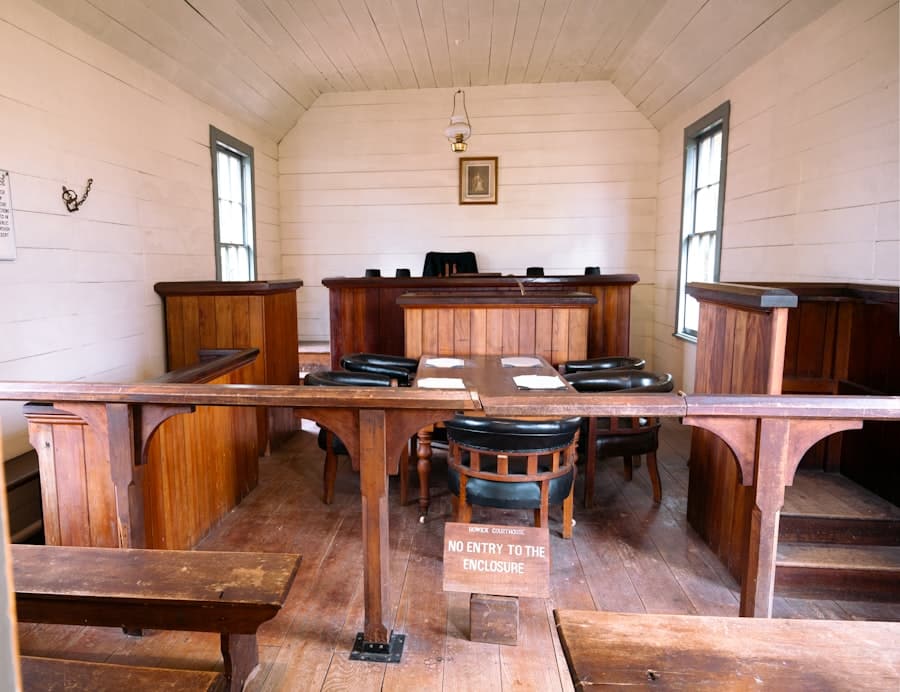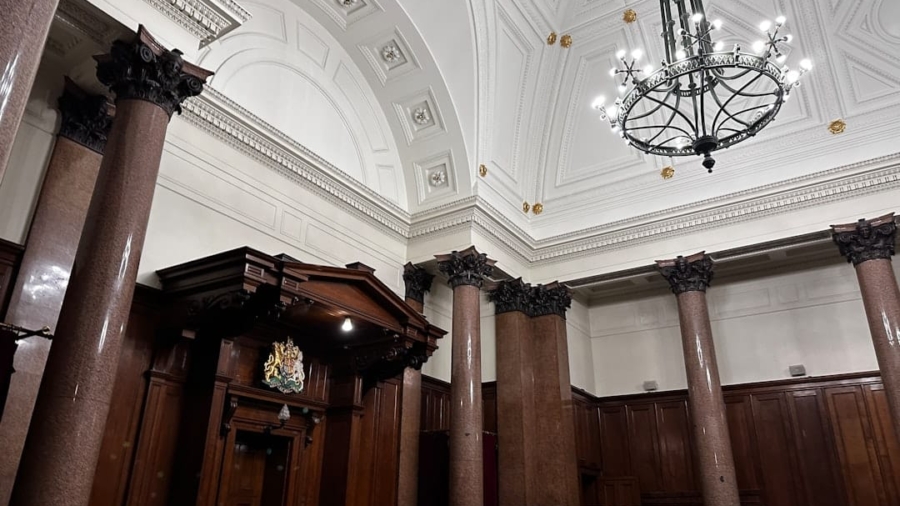Latency, defined as the delay before a transfer of data begins following an instruction, plays a critical role in the functionality of virtual courtrooms. In legal proceedings, where precision and timing are paramount, even minor delays can have significant repercussions. For instance, during a live testimony, if a witness experiences a lag in audio or video transmission, it can lead to misunderstandings, misinterpretations, or even the loss of critical evidence.
This is particularly concerning in high-stakes cases where every second counts, and the integrity of the judicial process must be maintained. Moreover, latency can affect the overall experience of participants in virtual courtrooms. Judges, attorneys, and witnesses rely on seamless communication to ensure that proceedings flow smoothly.
When latency issues arise, they can create an environment of frustration and confusion. For example, if a judge is unable to hear a lawyer’s argument in real-time due to delays, it may disrupt the courtroom’s rhythm and lead to procedural complications. The psychological impact on participants cannot be overlooked either; the stress of navigating a technologically flawed environment can detract from the focus on the case at hand, ultimately undermining the pursuit of justice.
Key Takeaways
- Latency in virtual courtrooms can impact real-time communication and access to justice.
- 5G technology holds promise in reducing latency and improving the efficiency of virtual courtrooms.
- Real-time communication in virtual courtrooms can be enhanced with the implementation of 5G technology.
- Low latency 5G networks have the potential to improve access to justice for all individuals.
- 5G technology can help overcome technical challenges and facilitate remote witness testimonies in virtual courtrooms.
The Promise of 5G Technology in Reducing Latency
Enhanced Real-Time Communication
With 5G, the potential for instantaneous data transmission enables judges and attorneys to interact with witnesses and evidence in real-time, eliminating the frustrating delays that have plagued earlier technologies. This capability is particularly crucial in virtual courtrooms, where timely communication is essential.
Higher Density of Connections
5G technology is designed to support a higher density of connections simultaneously, making it an ideal solution for virtual courtrooms where multiple participants may be connected at once. This capability ensures that all parties can engage effectively in proceedings without compromising speed or quality.
Enhanced Efficiency and Integrity
The ability to handle numerous connections without compromising speed or quality not only enhances the efficiency of court proceedings but also reinforces the integrity of the judicial process. For instance, during complex trials involving multiple witnesses and legal representatives, 5G can facilitate smooth interactions without the risk of dropped connections or lagging audio and video feeds.
Enhancing Real-Time Communication with 5G in Virtual Courtrooms

Real-time communication is the backbone of any courtroom setting, and 5G technology stands poised to revolutionize this aspect within virtual courtrooms. The ultra-reliable low-latency communication (URLLC) feature of 5G allows for near-instantaneous exchanges between participants. This means that judges can issue rulings, attorneys can present arguments, and witnesses can provide testimonies without the interruptions caused by technological delays.
The immediacy afforded by 5G enables a more dynamic and responsive legal environment. In practical terms, this enhancement translates into more effective cross-examinations and smoother presentations of evidence. For example, if an attorney needs to present a video recording as evidence during a trial, 5G allows for high-definition streaming without buffering or lag.
This capability ensures that jurors receive a clear and uninterrupted view of the evidence being presented, which is crucial for their understanding and decision-making processes. Additionally, the ability to communicate seamlessly fosters a more collaborative atmosphere among legal professionals, allowing for real-time strategizing and adjustments during proceedings.
Improving Access to Justice with Low Latency 5G Networks
Access to justice is a fundamental principle of any democratic society, yet traditional court systems often face barriers that hinder equitable access for all individuals. Geographic limitations, socioeconomic factors, and technological disparities can create significant obstacles for those seeking legal recourse.
For instance, individuals living in rural areas may struggle with slow internet connections that impede their ability to participate in virtual court proceedings. With 5G technology, these individuals can connect to courtrooms from their homes without experiencing the frustrations associated with lagging connections. This increased accessibility not only empowers individuals to engage with the legal system but also promotes inclusivity by ensuring that all voices are heard in judicial matters.
Furthermore, as more courts adopt virtual formats, the reliance on 5G networks can help standardize access across diverse populations.
Overcoming Technical Challenges in Virtual Courtrooms with 5G
While the promise of 5G technology is substantial, it is essential to acknowledge that its integration into virtual courtrooms is not without challenges. One significant hurdle is the need for infrastructure development to support widespread 5G deployment. Many regions still lack the necessary network infrastructure to fully leverage the benefits of 5G technology.
This disparity could exacerbate existing inequalities in access to justice if not addressed comprehensively. Additionally, training legal professionals and court staff to effectively utilize new technologies is crucial for successful implementation.
Legal practitioners must become adept at navigating digital platforms while maintaining their focus on legal principles and procedures. Courts may need to invest in training programs that equip personnel with the necessary technical skills to operate within a 5G-enabled virtual courtroom effectively.
The Role of 5G in Facilitating Remote Witness Testimonies

Enhanced Capabilities with 5G Technology
5G technology enhances this capability by providing reliable connections that ensure witnesses can testify from virtually anywhere without fear of interruptions or delays. This flexibility not only accommodates witnesses who may be unable to travel due to health concerns or logistical challenges but also expands the pool of potential witnesses who can contribute valuable insights to cases.
Seamless Integration into Courtroom Proceedings
For example, consider a scenario where an expert witness resides in another country but possesses critical knowledge relevant to a case. With 5G technology facilitating high-quality video conferencing, this expert can provide testimony in real-time without the need for costly travel arrangements or time-consuming scheduling conflicts.
Enriching the Judicial Process
The ability to seamlessly integrate remote testimonies into courtroom proceedings enriches the judicial process by allowing courts to draw upon a broader range of expertise and perspectives.
Ensuring Data Security and Privacy in 5G-Powered Virtual Courtrooms
As virtual courtrooms increasingly rely on digital technologies for their operations, concerns regarding data security and privacy become paramount. The transition to 5G networks introduces new vulnerabilities that must be addressed to protect sensitive information exchanged during legal proceedings. Cybersecurity measures must evolve alongside technological advancements to safeguard against potential breaches that could compromise the integrity of judicial processes.
Implementing robust encryption protocols is one way to enhance data security within 5G-powered virtual courtrooms. By encrypting communications between participants, courts can mitigate risks associated with unauthorized access or interception of sensitive information. Additionally, establishing strict access controls ensures that only authorized individuals can participate in virtual proceedings, further protecting the confidentiality of legal discussions and evidence presented during trials.
The Future of Virtual Courtrooms: Harnessing the Potential of 5G Technology
Looking ahead, the future of virtual courtrooms appears promising as courts increasingly harness the potential of 5G technology. The combination of low latency, high-speed connectivity, and enhanced real-time communication capabilities positions 5G as a transformative force within the legal landscape. As courts continue to adapt to changing societal needs and technological advancements, embracing these innovations will be essential for ensuring that justice remains accessible and efficient.
Moreover, as legal professionals become more comfortable with digital tools and platforms, we may witness a shift toward hybrid courtroom models that blend traditional practices with modern technology. This evolution could lead to more flexible scheduling options for court appearances and greater participation from diverse stakeholders within the legal system. Ultimately, by leveraging the capabilities of 5G technology, virtual courtrooms have the potential to redefine how justice is administered in an increasingly interconnected world.
In a recent article on enicomp.com, the importance of reducing latency in virtual courtrooms was discussed in relation to the role of 5G technology. This topic is further explored in an article about Instagram’s founders returning to the social media scene, highlighting the need for efficient communication and connectivity in today’s digital world. To learn more about the best order flow trading software, check out another insightful article on enicomp.com. Additionally, for those interested in voice recording software, there is a helpful article on the best free options available. Click here to read more.
FAQs
What is 5G?
5G is the fifth generation of wireless technology, designed to provide faster and more reliable communication networks.
What is latency?
Latency refers to the delay between the sending and receiving of data in a network. In virtual courtrooms, latency can cause delays in audio and video communication, impacting the efficiency of legal proceedings.
How does 5G reduce latency in virtual courtrooms?
5G technology offers significantly lower latency compared to previous generations of wireless technology, allowing for real-time communication and interaction in virtual courtrooms.
What are the benefits of reduced latency in virtual courtrooms?
Reduced latency in virtual courtrooms enables seamless and real-time communication between judges, lawyers, and participants, improving the overall efficiency and effectiveness of legal proceedings.
Are there any challenges in implementing 5G in virtual courtrooms?
Challenges in implementing 5G in virtual courtrooms may include infrastructure requirements, security concerns, and the need for reliable network coverage to ensure consistent connectivity.

